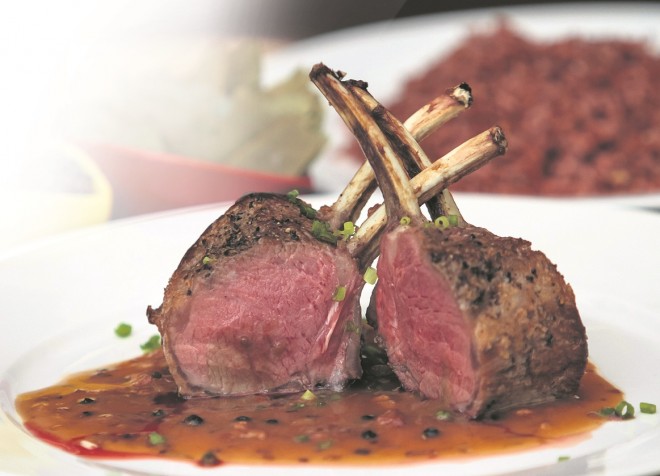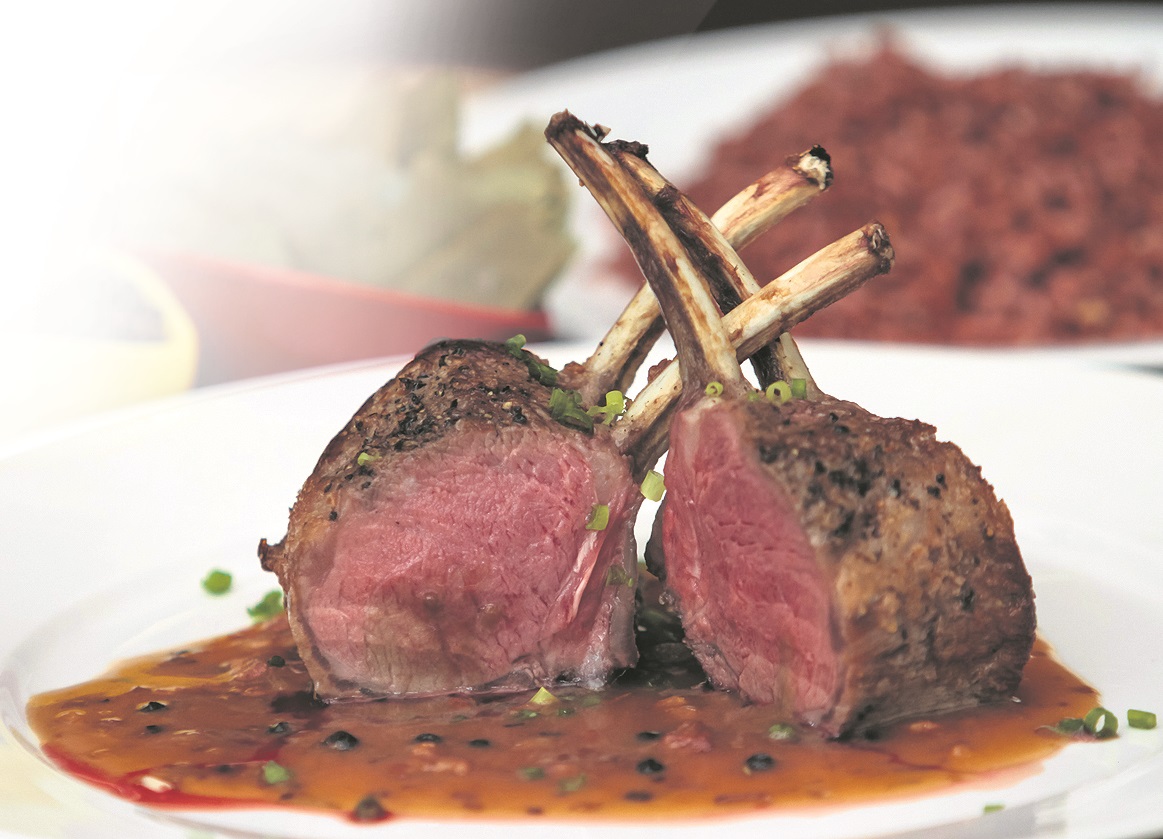
For celebrity chef Sharwin Tee, adobo requires only three essential ingredients: vinegar, peppercorns and bay leaf (laurel).
“If you have those three main ingredients, then what you prepare is pretty close to adobo,” says Tee. “Of course, you can add anything like garlic, but I hardly use garlic in my adobo.”
Garlic, he explains, tends to mask the full flavor of the meat in adobo. He also hardly uses soy sauce, because he reckons there wasn’t any of it available when Filipinos first cooked adobo.
“Adobo was a dish that predated the Chinese trade,” he points out. “If it predated the Chinese, who introduced us to soy sauce, then adobo would not have had any soy sauce.”
Instead, Tee prefers intensifying the stewed dish with bay leaf, because it gives off a strong, aromatic flavor and keeps all the spices and seasonings together.
“When you try to name all the ingredients in adobo, bay leaf is probably the last one you can guess,” he says. “It’s just in the background, but it’s like the one that holds everything together. It has that nice earthy taste.”

New rendition
Tee, host of Lifestyle Network’s first locally produced TV cooking show “Curiosity Got the Chef,” has added to his list of adobo recipes a new rendition inspired by his recent shoot in Baguio City for the show.
Rack of Lamb with Bacon Adobo Sauce offers a classy dish of tender meat bathed in adobo sauce and cooked with bacon bits.
The lamb, seasoned only with salt and pepper, is seared until golden brown and finished off in the oven. Tee then sautés bacon, sibuyas Tagalog, peppercorns, bay leaf and rosemary until all of the bacon oil comes out.
Tee adds a bit of flour to thicken the mixture and pours in mirin, sukang Iloko made from sugarcane, and chicken stock.
He uses sukang Iloko for its sweet aftertaste. Sometimes, he adds balsamic vinegar to make the adobo sweeter, and coconut vinegar for the traditional sweet-salty-sour relish.
The adobo gets its saltiness from the bacon. Because it’s cured and smoked, bacon has a depth of flavor and, most of the time, a smoky aftertaste that complements any meat dish.
“We visited a kambingan in Baguio and one of the specialties was adobong kambing,” recalls the 36-year-old Tee. “I loved the way they cook kambing in adobo sauce. That’s why I thought of doing an adobo with rack of lamb and bacon.”
The lamb adobo has no garlic because “I want you to taste the lamb, as the garlic will only overpower it,” Tee explains.
Hooked on cooking
Tee got hooked on cooking at six years old. He would regularly watch “Wok with Yan” and “Cooking It Up with Nora Daza” instead of cartoons. At 11, he was already teaching the family cook how to prepare dishes he wanted to eat, because he was not allowed to go near the stove.
He cooked his first-ever dish at 14. It was Bacon-Wrapped Cheese.
“I saw the Dazas wrap the asparagus in bacon,” Tee recounts. “I wanted some bacon, too, and saw the cheddar cheese in the ref. That was the start of my cooking adventure.”
After finishing Communication Arts at Ateneo de Manila University, Tee took up culinary studies at Pacific Institute of Culinary Arts in Vancouver, Canada, in 2002. He became a personal chef and later won Lifestyle Network’s “Clash of the Toque-en Ones,” a talent search for the next big TV cooking show chef-host, in 2010.
He has also worked at the Embassy of Canada and The Tower Club in Makati, and has been guest chef in various hotels and resorts in and out of the country.
Late appreciation
Tee admits to appreciating adobo and cooking it for other people “a bit late in life,” when he got to taste other people’s versions of the dish. “I grew up thinking adobo should only taste sweet and salty,” he admits.
Then he discovered other versions were more sour than salty-sweet. “I like that more,” he says. “I try to make mine really, really sour. But for public consumption, I usually balance all the flavors.”
Tee remembers how he proudly introduced his adobo to his classmates in Canada. It was his birthday, and he invited friends and classmates over to his place. “I felt it was my duty to cook Filipino food because it was their only chance to try it,” he says. “So, I cooked adobo in super classic toyo-suka-paminta-laurel fashion.”
It was a big hit.
“I realized it’s a good introduction to Filipino food,” he says. “I think adobo is the easiest to understand if you have a foreign palate. Adobo is the best entry point. It’s stewed meat, and none of its ingredients are foreign to foreigners.”
Rack of Lamb with Bacon Adobo Sauce
Serves 3-4
Ingredients
1 whole rack of lamb, frenched
2 strips of honey-cured bacon, chopped into small pieces
2 shallots, minced
½ tsp dried rosemary
1 tbsp whole black peppercorns
1 bay leaf
1 tbsp flour
¼ c mirin
½ c sukang Iloko
¼ c water or chicken stock
2 tbsp olive oil
Salt and pepper to taste
Season lamb with salt and pepper. In a hot pan with olive oil, sear the lamb on both sides until golden brown, about 2-3 minutes per side. Finish the lamb in a 200ºC oven for 12-14 minutes for medium rare.
In the same pan, sauté bacon and shallots until golden. Add in peppercorns, rosemary and bay leaf and cook until fragrant.
Add in flour. Stir and cook until flour is brown. Pour in mirin and vinegar. Let stand to boil for a minute. Add in chicken stock and stir to remove lumps.
Let sauce simmer for 10 minutes. Serve the lamb with the adobo sauce and garlic rice.
E-mail [email protected]













































